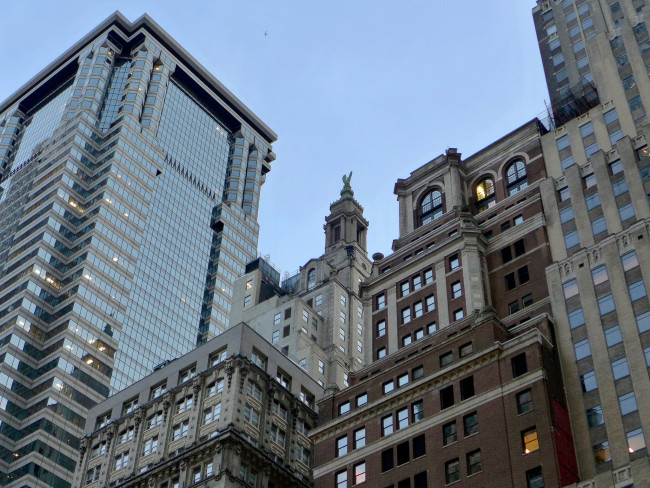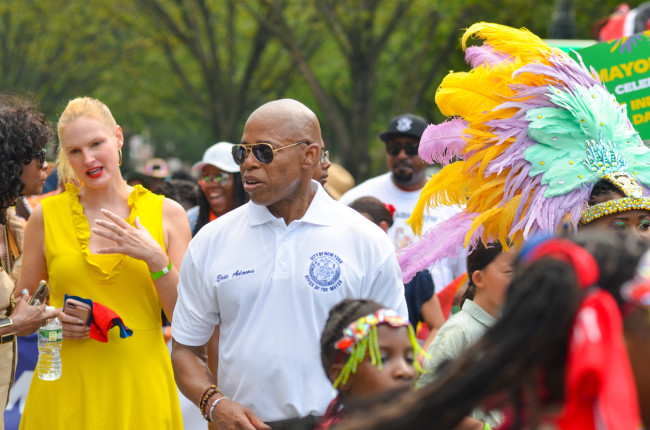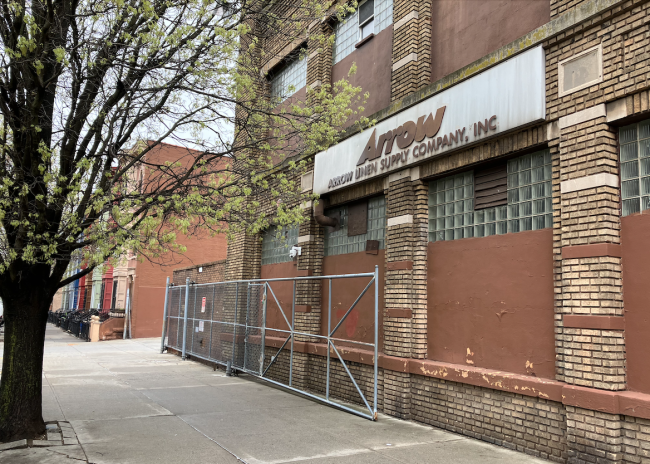City Council’s ‘City for All’ housing plan tied to the fate of Mayor Adams’s ‘City of Yes’
- Speaker Adams calls for greater investment in affordability and home ownership programs
- The City Council is using its leverage over the citywide rezoning sought by Mayor Adams

Speaker Adrienne E. Adams's said City for All "goes beyond zoning" to address the NYC housing crisis.
Official NYC Council Photo by Gerardo Romo
Earlier this month, New York City Council Speaker Adrienne E. Adams and council members introduced “City for All,” an affordable housing initiative described as a response to Mayor Eric Adams’s comprehensive rezoning plan, “City of Yes.”
Even though some reports have described it as a rival plan and a counter proposal, it is not really either of those things. And even though critics say Mayor Adams is now ‘politically weak’ with little influence over the council because of his indictment on federal corruption and bribery charges, departures from City Hall, and plummeting poll numbers (a majority of New Yorkers want the mayor to resign), City for All is designed to work with City of Yes. The new plan is intended to pick up where the rezoning initiative ends through investments in affordability and home ownership programs, and by strengthening tenant protections, among other objectives.
Essentially, there will be no City for All if the City Council fails to pass City of Yes, according to a source in the speaker’s office, who added that zoning is part of the solution, but doesn’t address the full challenge of the city’s housing shortage.
What is City of Yes missing?
City of Yes calls for building more housing in every NYC neighborhood through an array of citywide zoning changes with the goal of creating as many as 109,000 new homes over 15 years. One of the most contentious changes for outer borough neighborhoods where mass transit option is lacking is eliminating parking mandates for new construction.
The plan would also create a density bonus for affordable housing builders, legalize accessory dwelling units, encourage development near transit and above storefronts, make it easier for faith-based organizations to build housing on their campuses, and for offices to be converted to residential use.
But critics of the plan argue that rezoning does not necessarily mean affordable housing will be built. Rezoning gives private developers a green light to build taller or in previously unbuildable locations, but it doesn’t build affordable housing on its own.
Adding significantly more housing is something that many New Yorkers agree in principle is needed. A Princeton University survey earlier this year of 1,733 registered NYC voters found that 46 percent think it is “very important” for cities to pass laws that allow for new housing.
But New Yorkers often have strong feelings when it comes to building significantly more housing in their own neighborhoods. A spot zoning proposal in Windsor Terrace that would build two, 13-story buildings with about 244 residential units on the site of Arrow Linen, a commercial laundry, has been the subject of heated public meetings.
What would City for All do?
The issue with City of Yes is that it lacks investment, Speaker Adams said in her announcement of City for All. To that end, this new plan would increase funding for affordable housing programs for extremely low and low-income affordability (ELLA); NYCHA repairs, affordable home ownership development, senior and supportive housing; and create deeper affordability for households that are below 30 percent of area median income.
“We must go beyond zoning reforms to address all the unrelenting housing pressures that leave New Yorkers struggling to afford finding or staying in homes,” Speaker Adams said in a statement. “Without holistic solutions, our city’s severe housing and affordability crisis will only worsen.”
City for All also has some infrastructure investment to support additional housing, for example the plan calls for “significant capital funding for adequate DEP infrastructure to address existing flooding and sewer issues and plan for upgrades needed to support more housing.”
Some infrastructure investment needs to come from outside the city. For example, NYC doesn’t have control over its transit system (it is run by the Metropolitan Transportation Authority, a public benefit corporation) so City for All calls on entities like this to provide deeper funding, although specific numbers are not available yet.
Some more details on City for All can be found here.
Will the City Council pass City of Yes?
Zoning changes are critical to affordable housing development in NYC, said Rachel Fee, executive director of New York Housing Conference.
Fee said that City of Yes’s changes “pair well with the tax incentives passed in Albany in the spring,” which include a new version of 421-a tax break for developers as part of the state budget (tenant advocates and landlord groups however criticized the new budget).
There is strong support among council members for City of Yes, Fee said, adding that she thinks it will pass with minimal changes, despite some opposition.
“We’ve heard from members who represent low-density neighborhoods in the outer boroughs who don’t want to reduce parking requirements, for example. We’ve heard the same voices for decades and this why can’t to get where we need to be in terms of building enough affordable housing,” Fee said.
Fee also noted that Speaker Adams was trying to be responsive to council members, who heard from their constituents during the Uniform Land Use Review Procedure (ULURP) for City of Yes, including a marathon 14.5 hour public hearing with 300 testimonies, including many critical voices who said the plan didn’t do enough to address housing insecurity.
“That public testimony matters,” Fee said, adding that it impacts council members and community boards. “All feedback is taken to negotiation table,” she said.
City for All is meant to plug the gaps in City of Yes through the negotiation process. And because it is not a land use proposal like City of Yes it does not go through ULURP.
Fee also noted that Maria Torres-Springer, the well-respected deputy mayor for housing, economic development and workforce, is the new “quarterback behind the plan,” referring to City of Yes. Torres-Springer also became first deputy mayor following Sheena Wright’s departure during the federal corruption probe.
What happens next
In essence, the legislative and executive branches of city government are using the leverage they have over each other: The City Council regulates land use, and the mayor sets a budget. Each side wants something from the other and the clock is ticking: The City Council has 50 days to take action on a ULURP proposal.
But with the mayor’s political problems, the City Council appears to be on stronger footing to ask for investment as it negotiates City of Yes with Mayor Adams.
“The Council is in a position to ask for a lot,” Fee said.
A vote by the City Council on City of Yes is expected by the end of the month.
You Might Also Like



























